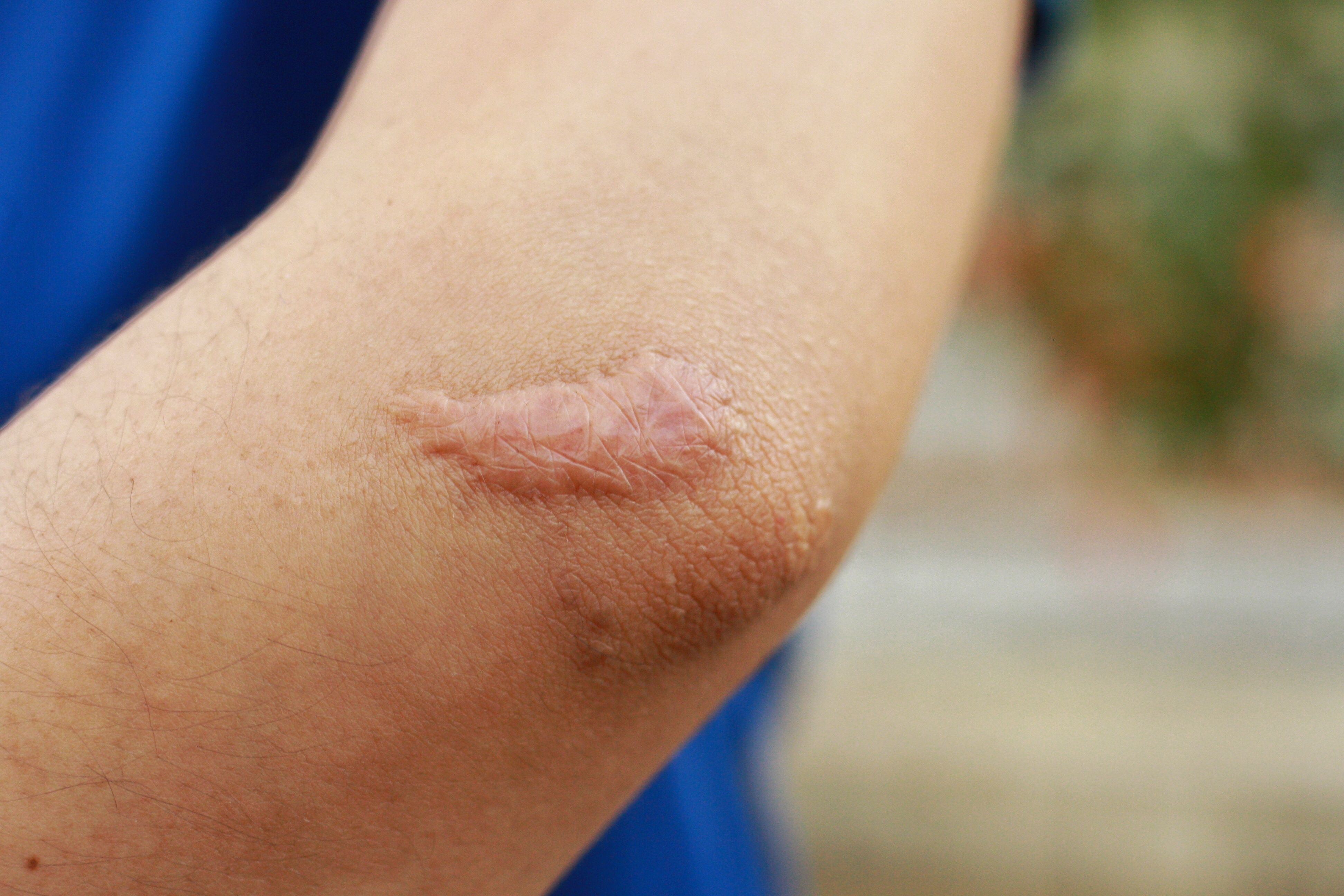- Acne
- Actinic Keratosis
- Aesthetics
- Alopecia
- Atopic Dermatitis
- Buy-and-Bill
- COVID-19
- Case-Based Roundtable
- Chronic Hand Eczema
- Chronic Spontaneous Urticaria
- Drug Watch
- Eczema
- General Dermatology
- Hidradenitis Suppurativa
- Melasma
- NP and PA
- Pediatric Dermatology
- Pigmentary Disorders
- Practice Management
- Precision Medicine and Biologics
- Prurigo Nodularis
- Psoriasis
- Psoriatic Arthritis
- Rare Disease
- Rosacea
- Skin Cancer
- Vitiligo
- Wound Care
News
Article
Cantella Triterpenes Cream May be a Potential Hypertrophic Scar Treatment
Author(s):
Researchers found that STAT3 could be activated, and inhibition could be achieved in patients with hypertrophic scarring.
A study1 published in the Journal of Cosmetic Dermatology found that cantella triterpenes cream may be an effective treatment for patients with hypertrophic scars due to the efficacy of its main active ingredient, asiaticoside (AC), in activating and inhibiting the STAT3 protein.
Kotchakorn/AdobeStock

Researchers sought to explore the mechanisms and targets of cantella triperenes cream, particularly target genes of AC, in treating hypertrophic scars. They noted that while research has supported the use of cantella triperenes cream in hypertrophic scarring due to its efficacy, there is still uncertainty about its targets molecularly and pharmacodynamically.
In part 1 of the study, a network pharmacology analysis, researchers obtained data through a database, Venn diagram, and protein-protein interaction (PPI) analysis. Core gene screening entailed analysis of targets within the PPI network to determine a connection between them.
Researchers then constructed a drug-component-target network diagram to sort PPI analysis and core gene screening data before analyzing the network relationship between targets and AC. Hypertrophic scar tissue and normal skin tissue fibroblasts were then obtained and cultured.
Part 2 of the study included an in vitro assay examining the phosphorylation level of the STAT3 protein, an MTT assay, and western blot analysis. Cells were divided into groups, which included:
- Control group (hypertrophic scar fibroblasts without treatment)
- AC group (hypertrophic scar fibroblasts treated with AC)
- AC+siNC group (hypertrophic scar fibroblasts treated with AC and transfected by an siRNA negative control)
- AC+si-STAT3 group (hypertrophic scar fibroblasts treated with AC and transfected by si-STAT3)
Researchers also conducted a scratch wounding experiment wherein cells were scratched with a sterile pipette tip, cultured, treated with AC, and analyzed.
As a result, researchers were able to obtain potential gene targets, including 134 pharmacodynamic targets of AC and 2,333 targets of hypertrophic scarring. When compared to normal human fibroblasts, hypertrophic scar fibroblasts demonstrated an increased amount of the STAT3 protein, and cell viability was also much higher. They also found that treatment with AC significantly inhibited STAT3 protein expression in hypertrophic scar fibroblasts. AC also decreased the ability of hypertrophic scar fibroblasts to migrate.
“Our experiments determined that STAT3 regulated the migration of HSFs (hypertrophic scar fibroblasts), and collectively, AC not only reduced the phosphorylation of STAT3, but also effectively inhibited the migration of HSFs,” according to Tan et al. “After confirming the abnormal activation of STAT3 in HSFs, we establish a si-STAT3 cell model using siRNA interference technology. This model serves as a positive control to evaluate the efficacy of AC and investigate the effect of AC on HSFs. Briefly speaking, AC may regulate the generation and remodeling of ECM in HSFs by inhibiting the phosphorylation of STAT3 and the transduction of TGF signal in HSFs, thereby resulting in the decreased expression levels of COL 1, α-SMA, and FN1 proteins.”
Reference
- Tan M, Wu D, Zhou Y, Duan B. Centella triterpenes cream as a potential drug for the treatment of hypertrophic scar through inhibiting the phosphorylation of STAT3: a network pharmacology analysis and in vitro experiments. J Cos Dermatol. Published online August 10, 2023. doi:10.1111/jocd.15883
Newsletter
Like what you’re reading? Subscribe to Dermatology Times for weekly updates on therapies, innovations, and real-world practice tips.











